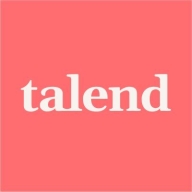

WhereScape RED and Talend Open Studio compete in the data integration and warehouse management category. WhereScape RED has an advantage in speed and automation due to its data lineage and impact analysis capabilities, while Talend Open Studio is stronger in connector extensiveness and flexibility.
Features: WhereScape RED offers automated documentation, impact analysis, and comprehensive schema generation, significantly reducing the time needed for data warehouse management. Talend Open Studio features a variety of connectors, comprehensive database management capabilities, and supports a range of data sources and platforms, enhancing its flexibility for integration tasks.
Room for Improvement: WhereScape RED could enhance performance and scheduler reliability, addressing its dependency on target databases for processing to improve scalability and flexibility. Talend Open Studio needs to refine its resource consumption, error handling, and support for non-Java environments to improve its open-source platform.
Ease of Deployment and Customer Service: WhereScape RED supports primarily on-premises deployment with reliable technical support and responsive customer service. Talend Open Studio also favors on-premises deployment with additional hybrid cloud options but needs to enhance its technical support to match WhereScape's personalized service quality.
Pricing and ROI: WhereScape RED offers straightforward licensing, ensuring significant ROI through reduced development times and automation, especially in large deployments. Talend Open Studio is available as an open-source option, with additional costs for advanced features and support. While Talend's enterprise pricing may be high, the open-source version is cost-effective for many businesses. WhereScape RED provides a quick break-even point and substantial ROI, while Talend is notable for initial cost-effectiveness.
| Product | Market Share (%) |
|---|---|
| Talend Open Studio | 3.2% |
| WhereScape RED | 1.0% |
| Other | 95.8% |

| Company Size | Count |
|---|---|
| Small Business | 22 |
| Midsize Enterprise | 13 |
| Large Enterprise | 18 |
| Company Size | Count |
|---|---|
| Small Business | 6 |
| Midsize Enterprise | 4 |
| Large Enterprise | 11 |
Talend Open Studio is a free, open source ETL tool for data integration and Big Data. The solution enables you to extract diverse datasets and normalize and transform them into a consistent format which can be loaded into a number of third-party databases and applications.
Talend Open Studio Features
Talend Open Studio has many valuable key features. Some of the most useful ones include:
Talend Open Studio Benefits
There are several benefits to implementing Talend Open Studio. Some of the biggest advantages the solution offers include:
Reviews from Real Users
Below are some reviews and helpful feedback written by PeerSpot users currently using the Talend Open Studio solution.
Elio B., Data Integration Specialist/CTO at Asset messages, says, "The solution has a good balance between automated items and the ability for a developer to integrate and extend what he needs. Other competing tools do not offer the same grade of flexibility when you need to go beyond what is provided by the tool. Talend, on the other hand, allows you to expand very easily."
A Practice Head, Analytics at a tech services company mentions, “The data integration aspect of the solution is excellent. The product's data preparation features are very good. There's very useful data stewardship within the product. From a technical standpoint, the solution itself is pretty good. There are very good pre-built connectors in Talend, which is good for many clients or businesses, as, in most cases, companies are dealing with multiple data sources from multiple technologies. That is where a tool like Talend is extremely helpful.”
Prerna T., Senior System Executive at a tech services company, comments, “The best thing I have found with Talend Open Studio is their major support for the lookups. With Salesforce, when we want to relate our child objects to their parent object, we need to create them via IDs. Then the upsert operation, which will allow you to relate a child object to the event, will have an external ID. That is the best thing which keeps it very sorted. I like that.”
An Implementation Specialist, Individual Contributor at a computer software company, states, “I can connect with different databases such as Oracle Database or SQL Server. It allows you to extract the data from one database to another. I can structure the data by filtering and mapping the fields.” He also adds, “It is very user-friendly. You need to know the basics of SQL development or SQL queries, and you can use this tool.”
PeerSpot user Badrakh V., Information System Architect at Astvision, explains, "The most valuable features are the ETL tools."
WhereScape is data warehouse software that automates the Data Warehouse lifecycle. From implementation to maintenance, WhereScape will ensure your data warehouse projects are completed up to 5x faster than manual coding.
We monitor all Data Integration reviews to prevent fraudulent reviews and keep review quality high. We do not post reviews by company employees or direct competitors. We validate each review for authenticity via cross-reference with LinkedIn, and personal follow-up with the reviewer when necessary.